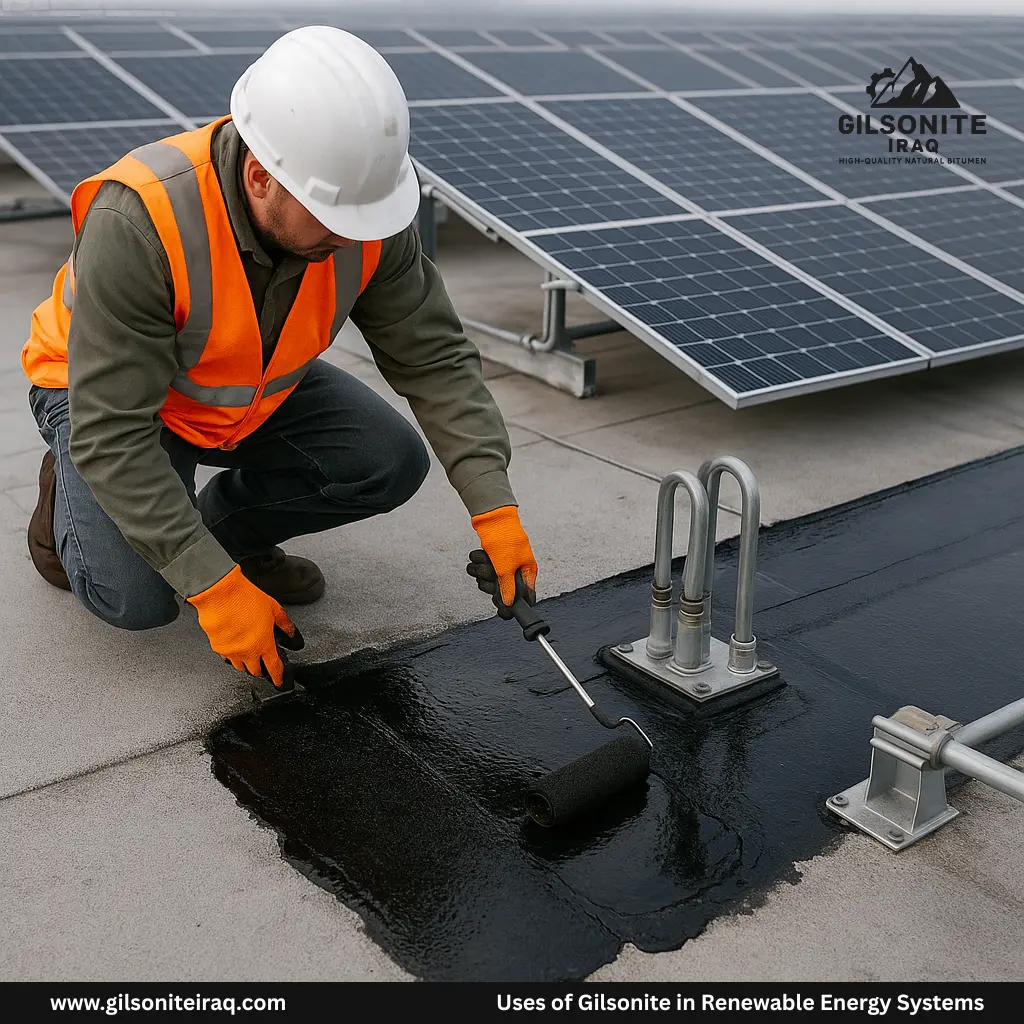Introduction: Why Gilsonite Belongs in the Energy Transition
Gilsonite (natural bitumen) is best known as a premium asphalt modifier, but its chemistry—high fixed-carbon content, intrinsic hydrophobicity, and film-forming behavior—makes it a practical enabler for renewable energy systems and infrastructure. From battery materials to corrosion-resistant coatings in wind and solar farms, gilsonite can reduce total lifecycle cost while improving durability.
1) Battery Materials: Turning Gilsonite into Hard Carbon
Emerging sodium-ion and potassium-ion batteries rely on hard carbon anodes. Gilsonite can be carbonized (and optionally activated) to produce hard carbon with tunable porosity, offering a cost-effective domestic feedstock in the Middle East. Key points:
- Processing window: ~800–1,300 °C under inert gas; temperature controls porosity, conductivity, and initial coulombic efficiency.
- Performance levers: low-ash source grades, post-treatments (surface passivation), and controlled particle size distribution.
- Use cases: stationary storage, low-speed EVs, microgrids where cost and sodium abundance matter.
Gilsonite—request specs” → /contact
2) Wind & Solar Balance-of-Plant: Coatings and Waterproofing
Solar parks and wind farms require large areas of underground cabling, inverter pads, junction boxes, and foundations—exposed to moisture, salts, and thermal cycling. Gilsonite-modified coatings and membranes provide:
- Hydrophobic barriers that resist water ingress in plinths, cable trenches, and vaults.
- Self-sealing behavior that helps prevent micro-crack propagation.
- Abrasion and fatigue resistance for concrete and steel protection in harsh climates.
3) Cables & Enclosure Protection
For PV and wind BOS, reliability of power and data cables is mission-critical. Gilsonite-based mastics and jacketing compounds can deliver:
- Enhanced impermeability to moisture and soil chemicals.
- Improved dielectric stability when correctly formulated with compatible polymers.
- Lower total installed cost via extended maintenance intervals.
4) Green Roofing & BIPV Readiness
As building-integrated photovoltaics (BIPV) expands, substrate longevity matters. Gilsonite-modified membranes provide:
- UV and heat resistance suitable for rooftops hosting PV arrays.
- Surface durability for mounting hardware without rapid membrane erosion.
- Ease of hot-application with good adhesion to varied substrates.
5) Composite Components & Repair Systems
Wind blades, nacelles, and housings often use advanced composites. Gilsonite-derived resins or fillers can serve as:
- Toughening agents in epoxy/asphaltic hybrid systems.
- Crack-bridging modifiers for field repairs subject to vibration and flex.
- Low-temperature primers that improve bond lines on weathered surfaces.
6) Life-Cycle & Sustainability Considerations
While gilsonite is hydrocarbon-based, durability gains (less rework, fewer replacements) can reduce life-cycle emissions. Additional levers:
- Warm-mix compatible emulsions to lower application temperatures.
- Solvent-recovery and waterborne systems to cut VOCs.
- Local sourcing (e.g., Iraq) to shorten logistics emissions to regional markets.
Implementation Playbook for EPCs and Owners
- Define the duty: UV, salt-spray, immersion, thermal cycling, abrasion.
- Select grade: softening point, ash content, solubility; request COA.
- Prototype: coat or laminate on real substrates; run adhesion/aging tests.
- Qualify: field trial on a live site; lock spec window.
- Scale: establish QA (Ring-and-Ball, ash, moisture, particle size) and logistics.
FAQs
Is gilsonite compatible with common elastomers and epoxies?
Yes—when compounded with suitable polymers and compatibilizers, gilsonite can enhance toughness and barrier performance.
Will gilsonite membranes affect PV module performance?
Not when used as substrate membranes. They can improve roof longevity, indirectly protecting PV yields.


